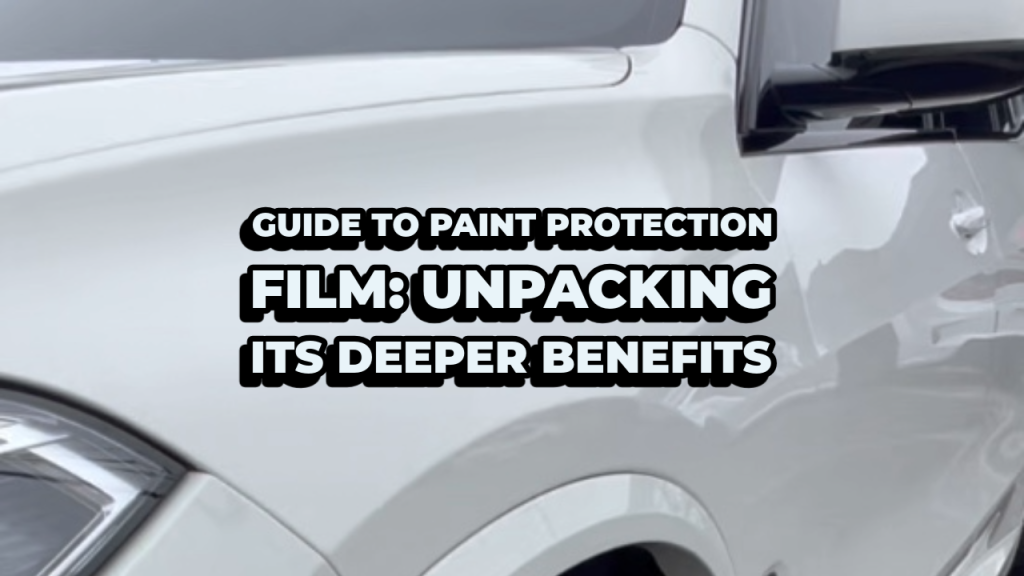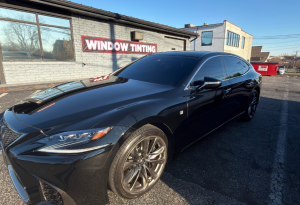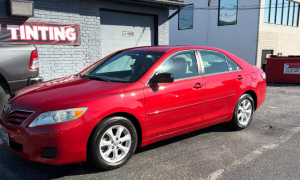Paint Protection Film (PPF) has earned a reputation as the gold standard in automotive finish preservation. But beyond its headline appeal as a nearly invisible shield, PPF offers a host of technical advantages that deliver long-term value, performance, and peace of mind. In this article, we dive deeper into the science and real-world benefits of PPF—exploring how it works at the molecular level, why self-healing matters, and how you can maximize its lifespan through proper maintenance.
1. The Science Behind PPF: Urethane’s Unique Properties
At its core, PPF is a cast polyurethane film formulated to withstand mechanical and environmental stresses. Key attributes include:
- Elasticity and Tensile Strength
PPF stretches to conform perfectly around complex curves, yet resists tearing when struck by road debris. Its high tensile strength means stones and grit impart their energy into the film rather than your clear coat. - UV Stabilizers
UV-absorbing additives are embedded throughout the film, blocking up to 99 percent of ultraviolet radiation. This prevents the film itself from yellowing over time and shields your factory paint from UV-induced oxidation and fading. - Hard-Coat Top Layer
Most modern PPFs feature a scratch-resistant “hard coat” on the outer surface. This layer provides a sacrificial abrasion barrier—minor scratches remain in the coating rather than on the film’s base or your paint.
2. Self-Healing: How Heat Restores Flawless Finish
One of PPF’s most celebrated innovations is its ability to “self-heal” light scratches and swirl marks. Two primary mechanisms make this possible:
- Elastic Memory
The film’s polymer chains have elastic memory. When scratched, the chains momentarily deform; heat (from the sun, engine bay, or a warm blow-dryer) restores the molecular alignment, erasing the defect. - Surface Tension Effects
Heat softens the hard-coat layer just enough to allow surface tension to pull the scratch closed. The result is a loss-free removal of light abrasions without any chemical or mechanical intervention.
Self-healing preserves that mirror-like gloss and eliminates the need for aggressive polishing—which can thin paint over time.
3. Hydrophobic Performance: Easier Cleaning and Lasting Clarity
PPF’s top-coat layer isn’t just scratch-resistant; it’s engineered to be highly hydrophobic:
- Water Beading
Rainwater, car wash rinse, and road grime bead up and roll off the surface, carrying dirt with them. This “lotus-leaf” effect means you spend less time scrubbing contaminants and more time enjoying a pristine finish. - Reduced Wash Frequency
Because grime doesn’t bond as strongly to the coated surface, you can extend your wash intervals without accumulating embedded dirt. That not only saves time but also reduces wear from aggressive scrubbing. - Stain Resistance
Bird droppings, bug splatter, brake dust, and road tar are more easily rinsed away. Prompt removal prevents staining or etching that might otherwise bond to the clear coat.
4. Chemical and Environmental Resilience
In addition to mechanical protection, PPF offers robust chemical resistance:
- Acid Rain and Industrial Fallout
Pollutants in acid rain and industrial fallout can etch unprotected paint. PPF serves as a chemically inert barrier, absorbing and shedding these contaminants during routine washes. - Petroleum Products and Solvents
Oil mist, gasoline overspray, and cleaning solvents that accidentally contact your paint will sit on the film’s surface without penetrating. A simple wipe with a mild automotive cleaner restores the protective layer. - Salt and Corrosive Agents
In snowy climates, road salt is a major contributor to corrosion. PPF prevents salt crystals from lodging directly against the paint, reducing the risk of rust and clear-coat peeling near chip sites.
5. Aesthetic Flexibility: Gloss, Matte, and Custom Finishes
Today’s PPF market offers more than just high-gloss protection:
- Matte and Satin Films
For those who favor a stealth look, matte PPF provides a uniform, non-reflective finish. The same urethane benefits apply—self-healing, UV stability, and hydrophobic performance—across any finish. - Custom Accents and Trim
PPF can be applied selectively to accents, wheels arches, or hood vents for contrast. Combined with color-matched vinyl wraps or chrome deletes, you can create a truly bespoke appearance. - Edge-Free Installation
Professional installers use computer-aided cutting and hand–wet application to produce invisible seams and flush edges—no visible borders or film outlines.
6. Longevity and Return on Investment
A high-quality PPF installation can last 5 to 10 years under normal driving conditions. Factors influencing service life include:
- Quality of Film
OEM-grade films with advanced hard coats and UV stabilizers outperform economy films. - Professional Installation
Certified technicians ensure complete adhesion, proper edge sealing, and full panel coverage—avoiding early lift or edge discoloration. - Maintenance Practices
Gentle cleaning with pH–neutral shampoos and occasional ceramic top-coat reapplications extend performance.
Given PPF’s role in preventing costly paint repairs, touch-ups, and premature repainting, the return on investment is significant—particularly on high-value or high-exposure vehicles.
7. Integrating PPF with Ceramic Coatings
For the ultimate in paint preservation, combine PPF with a nano-ceramic coating:
- Dual-Layer Defense
PPF handles mechanical impacts while the ceramic layer offers additional chemical resistance and enhanced hydrophobicity. - Extended Gloss Retention
Ceramic coatings provide extra depth and durability to the PPF’s finish, resisting water spotting and environmental fallout for longer. - Simplified Maintenance
The ceramic layer takes everyday wash abuse, preserving the PPF hard coat and minimizing potential micro-abrasions.
Most detailers offer package pricing for combined PPF and ceramic installs—streamlining service and warranty coverage.
8. Key Considerations When Choosing PPF
- Coverage Area
- Front-end packages (hood, fenders, bumper) defend the most vulnerable zones.
- Full-body coverage ensures comprehensive protection but at a higher cost.
- Film Brand and Thickness
- Thicker films (8–10 mil) provide greater impact resistance but may be less conformable.
- Thinner, more elastic films (6–7 mil) hug complex curves but require precise installation.
- Warranty and Aftercare
- Factory-backed warranties (5–10 years) cover yellowing, bubbling, and delamination.
- Check for included maintenance sprays or ceramic top-coat provisions.
- Installer Certification
- Look for PPF certifications from premium film manufacturers.
- Ensure the technician has experience with your specific make and model.
9. Real-World Case Study: Commuter vs. Performance Vehicles
- Daily Commuter
A midsize sedan driving 30 miles each way on highways benefits from a front-end PPF package. Road debris at higher speeds makes hood, bumper, and side-mirror protection cost-effective. - Performance Sports Car
A weekend-only sports car parked outdoors year-round justifies full-body PPF. UV protection preserves rare or exotic paint, while self-healing hard-coats maintain a flawless show-car finish.
10. Final Thoughts: Your Next Steps
Paint Protection Film represents a fusion of material science and precision engineering—delivering mechanical, chemical, and aesthetic advantages that far surpass traditional waxes or coatings. By understanding its deeper benefits and integrating PPF into your vehicle maintenance plan, you ensure that every mile adds value rather than wear.
Ready to explore PPF for your vehicle? Contact Ideal Image Auto Salon for a personalized consultation. We’ll assess your needs, walk you through coverage options, and demonstrate how modern PPF can preserve your car’s beauty and value for years to come.
- Phone: (410) 663-8468
- Address: 7901 Belair Road, Nottingham, MD 21236
Your car deserves nothing less than the best. Give it the protective advantage of Paint Protection Film—and drive with confidence, every day.





